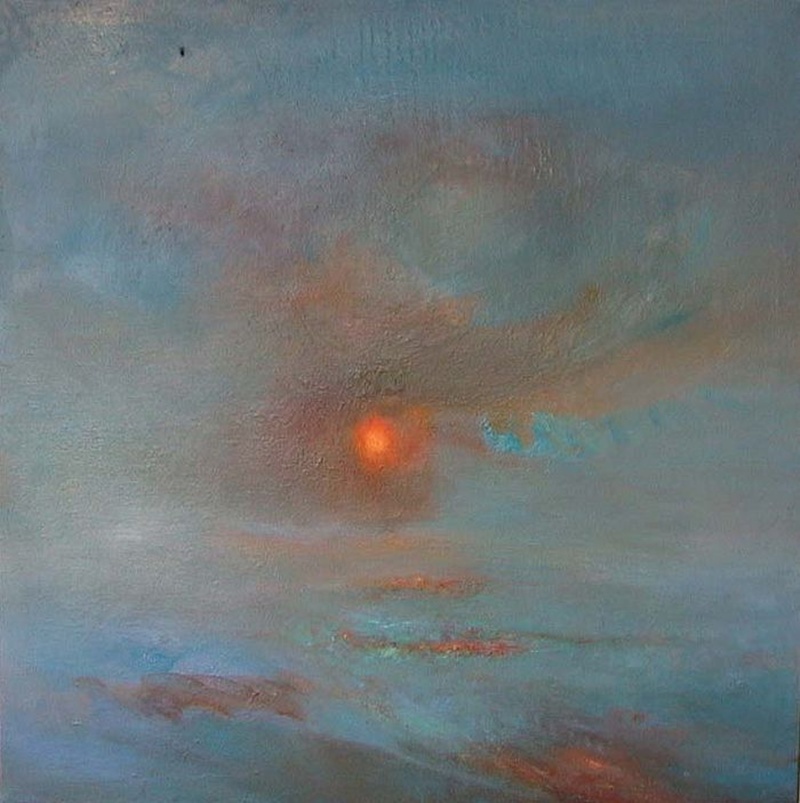Moving from one end of the country to the other has given artist Susie Lee a new and dynamic perspective on the painting of landscapes. Helen Brown spoke to her about capturing the character of the land and the sea and the eye-opening differences between north and south.
Susie Lee is endlessly inspired by the world around her. But when that world changes, coming to terms with a new setting in which to live and work isn’t the easiest thing to cope with.
She and her husband and young son moved north following her husband’s job relocation to Aberdeen, but what might have been more than a bit of a culture shock has actually proved to be so artistically inspiring that it has given her a fresh and vibrant outlook on her work as a professional painter.
That move was three years ago now and, happily settled in the heart of the Mearns, Susie reckons she could hardly have found anywhere more suited to her expressive style and artistic approach.
“The light and landscape of Cornwall are so very different and it’s a place that is full of artists. I moved there specifically to become a professional artist and was there for 10 years. For a while, it was difficult for me to imagine living and painting anywhere else. It seemed like the perfect world.
“It was more or less completely by accident that we ended up living in Kincardineshire we looked at several areas but I felt, when I came here, that I had been let out of a cage. Coming from what is essentially a narrow peninsula to this place, where there is so much more room, more open-ness, more light, was a huge change.
“When we came north, I think I knew more or less straight away that I wanted to live here if we could.”
During the past three years, Susie has produced a continuing body of work that has enjoyed exposure in shows both locally, in Montrose and at Robert and Penelope Ramsay’s gallery at Kinblethmont House near Arbroath and in a solo show, Art Amatoria, in Edinburgh. She is also involved with a group show as part of the Fingask Follies at Fingask Castle near Rait this month.
“Almost as soon as we arrived in Scotland to stay, I decided to paint what I was surrounded by and did that for a year and a half.
“Coming to Scotland was the greatest thing the feeling of space and opportunity, the grandeur. It’s so liberating, you can be completely alone, not seeing anybody, lost in the landscape.”
Currently, she is working on submissions for the John Moores Contemporary Painting Prize and for the Royal Scottish Academy and will also be exhibiting work in Paris in just over a year’s time. The body of work she is creating for that occasion is absolutely centred on her new home area.
The in-built feeling of drama in her canvases, regardless of their physical scale, is appropriate, perhaps, for someone who worked as an art director in television and film before becoming a full-time painter.
Her introduction to art came through her father’s art books rather than being exposed to galleries and exhibitions “I remember being transfixed by the images in the books” and a friend’s mother who was an art teacher was an indirect influence. “She once said to us, ‘Grass is never just one green,’ trying to teach us to really look at what was around us.
“It is totally different here, very exciting. I had painted mountains before but I hadn’t painted fields and light, dark, scudding clouds, the hugely dynamic yet often serene conditions that I found here.
“It’s like having a natural theatre all around you, an illuminated stage with the weather changing in front of you in a panorama that goes on for miles.
“Coming to Scotland wasn’t an artistic decision it was total chance and fate but it’s so amazing, scenically and atmospherically. I work hard at understanding it, at learning its history, what happened here as well as how it looks and changes from day to day. It’s the depth of the story I like.”
Her latest landscape-inspired project is to paint the River Esk from source to sea. These are the paintings she hopes to exhibit as her solo show in Paris next year. Her canvases are mainly largescale oils but she also plans to include drawings and watercolours.
“I really want to capture the cycle of a river and the life of the area it flows through, finding the spirit of the place and following the seasons.
“It’s a metaphor for existence its and ours, a marriage of abstraction and reality.”
